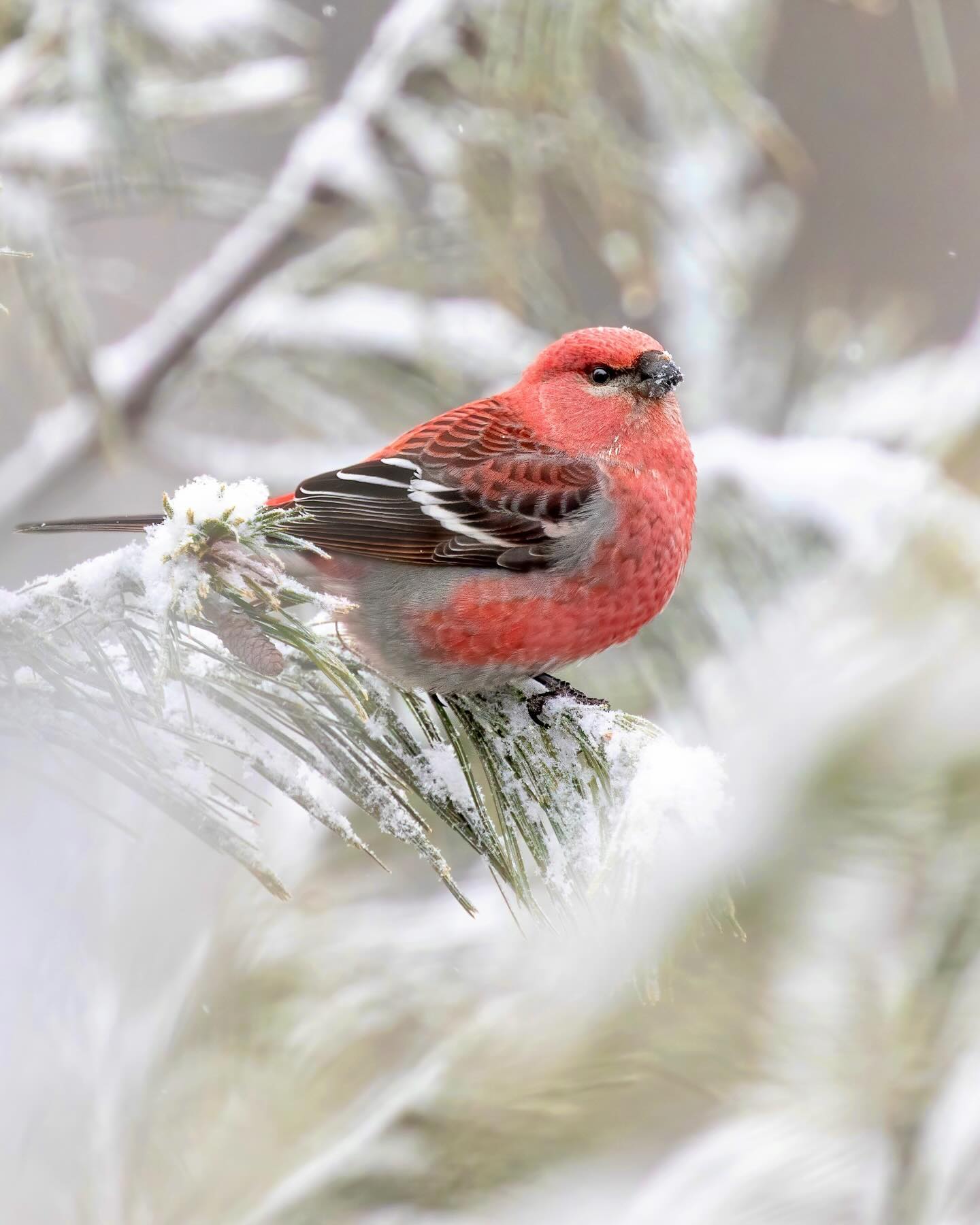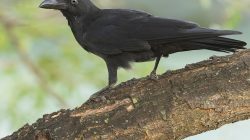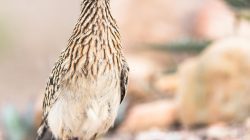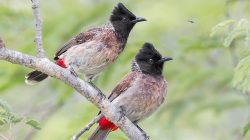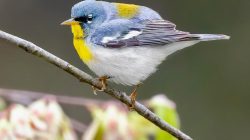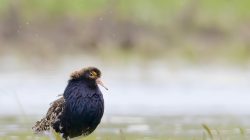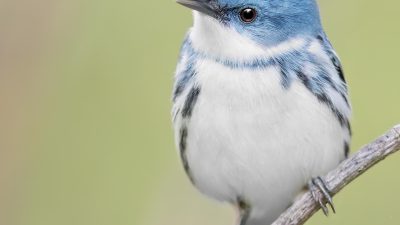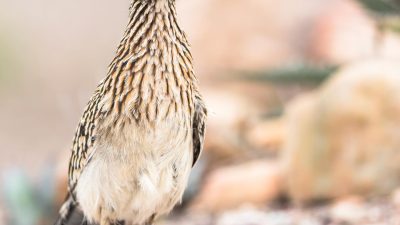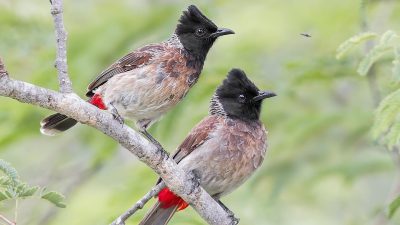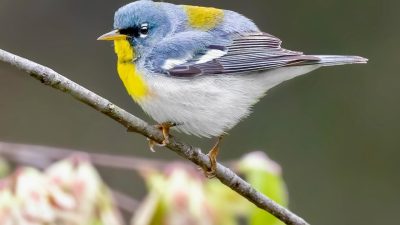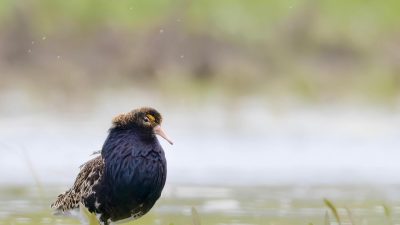Pine Grosbeaks (Pinicola enucleator): An In-Depth Exploration
Diajar.net – Pine Grosbeaks (Pinicola enucleator) are among the most striking and fascinating birds of the northern forests, distinguished by their vibrant plumage and notable presence across cold climates. These birds, though not as well-known as other avian species, possess intriguing traits in their appearance, habits, distribution, and role in their ecosystems. In this comprehensive article, we will explore every aspect of the Pine Grosbeak, from the origins of its name to its conservation status.
Origin of Animal Name
The name Pinicola enucleator is derived from Latin, reflecting both the bird’s habitat and physical traits. The genus name Pinicola is derived from “pinus,” meaning pine tree, and “cola,” meaning dweller, thus labeling the Pine Grosbeak as a “pine dweller.” This is fitting, as the bird is predominantly found in coniferous forests. The species name enucleator comes from the Latin word “enucleare,” which means “to remove the kernel,” an allusion to the bird’s feeding habits, particularly its ability to crack open seeds and extract the edible contents.
The name “Grosbeak” refers to the bird’s large, conical-shaped beak, which is an essential tool in its diet and foraging habits. While “grosbeak” is a term applied to several birds with large beaks, the Pine Grosbeak’s distinctive features make it easily recognizable in its native environment.
Appearance
Pine Grosbeaks are medium-sized passerine birds, with males and females exhibiting distinct plumage colors. Adult males are striking with their vibrant, rosy-red feathers that cover much of their head, throat, and chest, creating a bright contrast against their grayish back and wings. The female and juvenile Pine Grosbeaks, on the other hand, are more subdued in color, with a predominantly grayish-brown appearance, though they retain hints of the red in their plumage, often in the tail and wing feathers.
The beak of the Pine Grosbeak is one of its most prominent features, large and conical, ideal for cracking open seeds and nuts. Their eyes are dark and expressive, set against a generally rounded head shape. The tail is moderately long, slightly squared off, and often tipped with white or lighter feathers. Their wings are broad, enabling them to maneuver gracefully through their forested habitats.
In terms of size, Pine Grosbeaks typically measure about 22–26 cm in length and have a wingspan of around 33–38 cm. Adult males can weigh between 70 and 80 grams, while females are slightly lighter, typically around 60–70 grams. These dimensions make the Pine Grosbeak one of the larger species within the finch family.
Distribution
Pine Grosbeaks have a vast distribution range, extending across the northern parts of North America, Europe, and Asia. In North America, they are primarily found in the boreal forests of Canada, Alaska, and parts of the northern United States. They also migrate slightly southward during the winter months in search of food, especially to regions in the Pacific Northwest and parts of the Great Lakes.
In Europe and Asia, the Pine Grosbeak’s range stretches across the taiga and other cold forested regions. In Scandinavia, Russia, and northern Asia, they are also present, with similar patterns of seasonal movement. Their preference for coniferous forests, such as pine, spruce, and fir, makes these regions their ideal habitats, though they can occasionally be found in mixed woodlands.
Their adaptability to cold climates is noteworthy, as they thrive in environments where few other species can endure the harsh winter conditions. The presence of Pine Grosbeaks in such vast territories demonstrates their ability to cope with a variety of climates, ranging from subarctic to temperate.
Geography
The geographic range of the Pine Grosbeak is strongly linked to the distribution of coniferous forests. In North America, their range is concentrated in the northern reaches, particularly in the boreal forests that stretch across Canada and Alaska. These forests are characterized by a predominance of coniferous trees, including spruce, pine, and fir, which provide the primary food sources for the Pine Grosbeak.
In Europe and Asia, the Pine Grosbeak’s geographic range is similarly tied to forested landscapes, particularly the extensive taiga biome that spans much of Russia and northern Scandinavia. The birds are adapted to cold, snowy winters, often migrating to slightly lower altitudes in winter when food becomes scarce at higher elevations.
The geography of Pine Grosbeak habitats is marked by harsh winters, with snow covering much of the ground. However, these conditions are not prohibitive for the bird, as they are well-equipped to forage for seeds, berries, and other food sources even during the colder months.
Habits and Lifestyle
Pine Grosbeaks are primarily non-migratory, although some populations will make short-distance movements in response to food availability or changing weather conditions. They are generally solitary or form small family groups, especially during the breeding season. In winter, they may congregate in larger flocks, often feeding together on abundant food sources such as berries, seeds, and buds.
Pine Grosbeaks are not particularly aggressive toward one another, often feeding peacefully in the same areas. Their social behavior is relatively relaxed compared to other species, although males may sometimes display territorial tendencies during the breeding season, particularly when it comes to securing the best feeding grounds.
These birds are known for their quiet, soft calls, which include whistles and warbles that are often heard during flight or while perched in trees. Their communication is not as loud or frequent as some other bird species, but their presence is still noticeable due to their striking appearance and distinctive foraging habits.
Pine Grosbeaks are diurnal, meaning they are active during the day and typically rest at night. Their activity peaks during the morning and late afternoon, times when they forage for food or engage in social behaviors. They spend a considerable amount of time perched in trees, scanning the surroundings for food, and are often seen hopping along tree branches in search of seeds or buds.
Diet and Nutrition
The Pine Grosbeak is an omnivorous bird with a diet that predominantly consists of plant material, although they may occasionally eat insects during the summer months. The primary food sources for Pine Grosbeaks are seeds, berries, and buds from a variety of coniferous trees, particularly pines, spruce, and firs. They are particularly fond of the seeds of pine cones, which they are adept at extracting using their large, conical beaks.
During the winter months, when food is more scarce, Pine Grosbeaks will rely heavily on seeds, berries, and other fruiting plants that they find in the forests. They also feed on mountain ash berries, rowan berries, and even crabapples. In spring and summer, they may supplement their diet with small insects, including beetles and caterpillars, though these constitute a small portion of their diet compared to plant matter.
Their ability to survive on a diet of tough seeds and buds is a testament to their specialized beak and feeding behavior. Pine Grosbeaks are also known to forage from the ground, where they search for fallen seeds and fruits, especially during the colder months when snow covers much of the forest floor.
Population
The population of Pine Grosbeaks is relatively stable, though they can be subject to fluctuations depending on factors like food availability and the severity of winter conditions. Overall, the Pine Grosbeak is not considered a species at immediate risk of extinction, but certain populations may experience challenges due to habitat loss or climate change.
In North America, the Pine Grosbeak is relatively common in its northern range, with an estimated population size of several million individuals. In Europe and Asia, the species is also widespread, though its population density can vary depending on the region. For example, the Pine Grosbeak is more abundant in the taiga regions of Russia compared to other areas.
Despite being relatively common in its native regions, the Pine Grosbeak’s population is not immune to environmental pressures. The bird’s reliance on coniferous forests means that deforestation or climate change could affect its numbers in certain regions. Monitoring and research into the species’ population dynamics is ongoing, particularly in response to shifts in climate and habitat conditions.
Number of Populations
The exact number of Pine Grosbeak populations is difficult to determine, given the bird’s vast range and migratory patterns. However, it is believed that the species consists of several distinct populations scattered across its range in North America, Europe, and Asia. In North America, there are likely several isolated populations in the northern boreal forests of Canada and Alaska, while in Europe and Asia, populations are more continuous across the northern forests of Russia and Scandinavia.
The Pine Grosbeak is known to form loose populations, particularly during the winter months when they may congregate in larger groups to forage for food. These groups may disband once breeding season arrives, with individuals returning to their more solitary habits during the warmer months.
Conservation
Currently, the Pine Grosbeak is not listed as a species at risk of extinction, and its conservation status is generally classified as Least Concern by the International Union for Conservation of Nature (IUCN). However, this does not mean the species is entirely without threats. Habitat loss, particularly in areas where deforestation is occurring, can reduce the availability of suitable nesting sites and food sources. Additionally, climate change poses a potential threat, as shifts in temperature could affect the distribution of the trees and plants that the Pine Grosbeak relies on.
Conservation efforts for the Pine Grosbeak focus on preserving their habitats, particularly the coniferous forests where they live. Efforts to mitigate climate change and reduce deforestation can help ensure the long-term survival of this species. Although there are no specific conservation programs dedicated solely to the Pine Grosbeak at the moment, broader efforts to protect northern forests and the species that rely on them indirectly benefit this striking bird.
In conclusion, the Pine Grosbeak is a resilient and adaptable species that plays an important role in the ecosystems of the northern forests. Its distinct appearance, behavior, and reliance on coniferous trees make it a fascinating subject for study and admiration. While not currently threatened, it remains important to monitor this species to ensure its continued well-being amidst changing environmental conditions.
